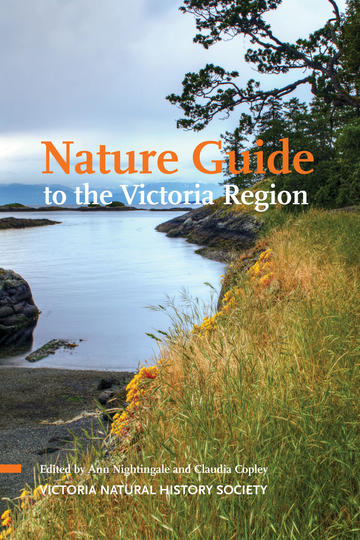About BC Books Online
BC Books Online was created for anyone interested in BC-published books, and with librarians especially in mind. We'd like to make it easy for library staff to learn about books from BC publishers - both new releases and backlist titles - so you can inform your patrons and keep your collections up to date.
Our site features print books and ebooks - both new releases and backlist titles - all of which are available to order through regular trade channels. Browse our subject categories to find books of interest or create and export lists by category to cross-reference with your library's current collection.
A quick tip: When reviewing the "Browse by Category" listings, please note that these are based on standardized BISAC Subject Codes supplied by the books' publishers. You will find additional selections, grouped by theme or region, in our "BC Reading Lists."
 Enlarge Cover
Enlarge Cover
The Victoria region is a natural wonderland—one of the most biologically rich areas of the country, with many plants and animals found nowhere else in Canada. Whether you're a beginner or a seasoned naturalist, a visitor or a resident, this book will give you the knowledge you need to get the most out of your explorations of southeastern Vancouver Island. Ten local experts have contributed their knowledge about all things natural in this region, from mushrooms and dragonflies to owls and whales. They describe the species most likely to be seen here, and direct you to the best places to see them.
Nature Guide to the Victoria Region is designed to help you understand the variety of habitats and natural wonders awaiting your discovery, all in a portable, easy-to-read format. It includes beautiful full-colour photographs, checklists and a map of all the great places to visit.
Ann Nightingale is president of the Rocky Point Bird Observatory, and Claudia Copley is the entomology collections manager at the Royal BC Museum. Both actively support the Victoria Natural History Society, as have the other naturalists and biologists who contributed to this book: Robert Cannings (dragonflies); Anna Hall (marine mammals); Gavin Hanke (fishes, reptiles and amphibians); Bryce Kendrick (fungi); Philip Lambert (intertidal life); James Miskelly (butterflies); David Nagorsen (land mammals); Leon Pavlick (plants); and David Stirling and Alan MacLeod (birds).


